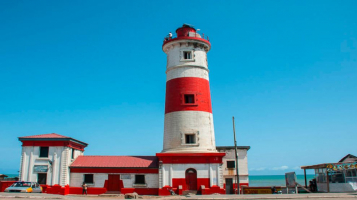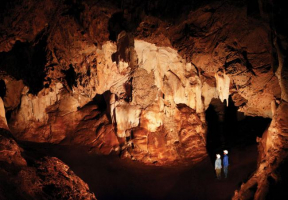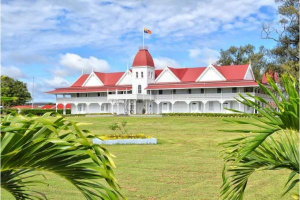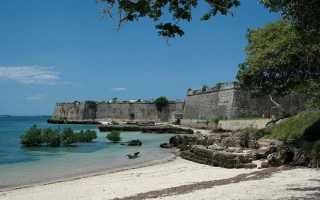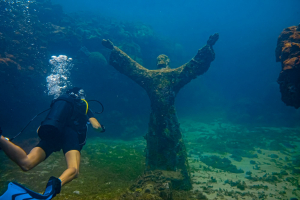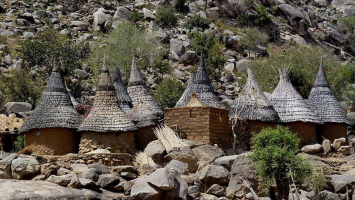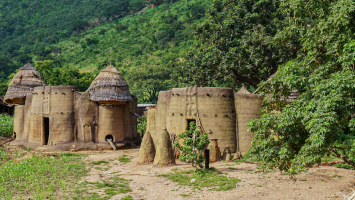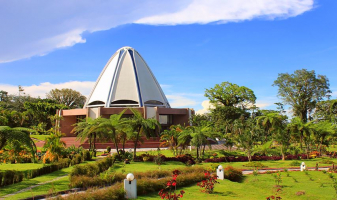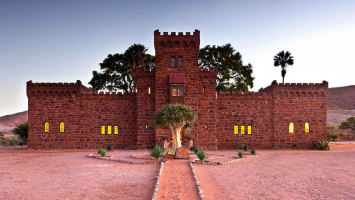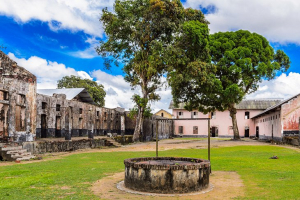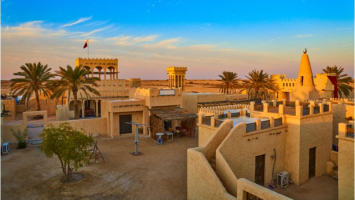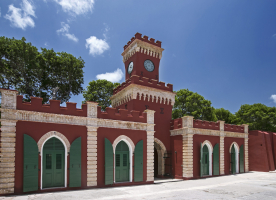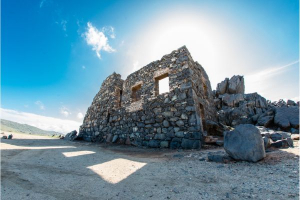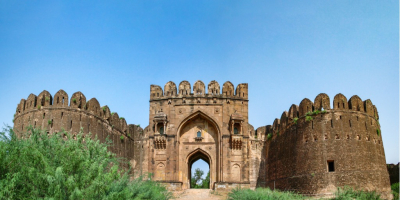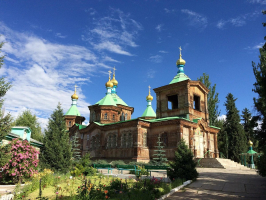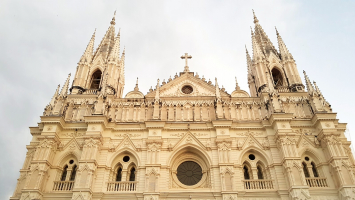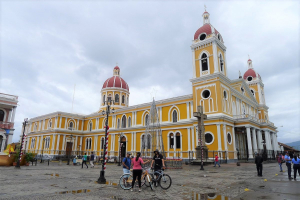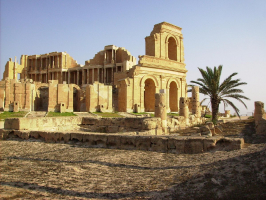Top 4 Most Famous Historical Sites in Gambia
The Senegambia Stone Circles are the most well-known of the Gambia's many intriguing sites and monuments. The Arch 22, Fort Bullen, and the Banjul State House ... read more...are popular places to view and serve as three of the city's most notable features for tourists visiting Banjul, The Gambia's capital. The ruins of Fort James on James Island are historically significant. More details about the most famous historical sites in Gambia are listed below.
-
Arch 22 is The Gambia's highest tower, rising 35 meters / 114 feet above Banjul's main streets. It is undoubtedly worth closer investigation and the most famous historical sites in Gambia. It was built astride the Banjul-Serrekunda Road in 1996 to commemorate the military 'coup d'état' that brought President Yahya Jammeh to power. The arch is really three stories high, with spiral staircases and elevators connecting them. From the second story, you may enjoy a fantastic view of the entire city of Banjul. A modest café and shop are also available. A monument of an unnamed soldier stands near the foot of Arch 22.
The off-white Arch 22 was erected by the construction company Gamsen between 1994 and 1996 at a cost of £720,000 (US$1.15 million) and unveiled on July 22nd to coincide with the date it commemorates - the coup of Yahya Jammeh. The Senegalese architects Pierre Goudiaby (Kujabi) and Amadou Samba created the hollow-arched pediment, which is supported by eight massive, fluted Doric columns.
A statue of a soldier cradling a baby in the midst of a roundabout stands in front of the monument's foundation. Gilded sculptures of musicians on circular, white pedestals stand behind the monument, facing the city. For refreshments, there is also a café built inside the grounds.
Open hours: daily - 09:00 to 23:00
Address: July 22 Drive, Banjul, The Gambia, GM, Africa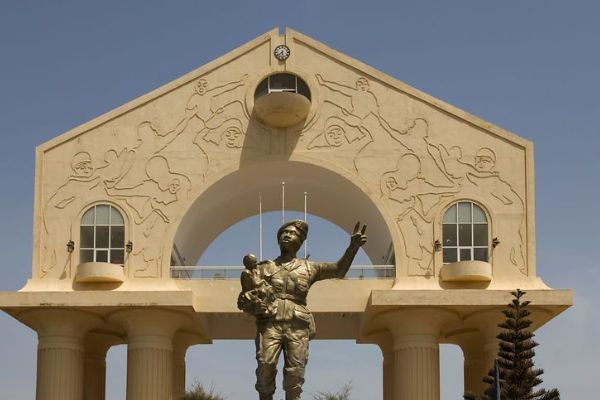
Photo: Pinterest 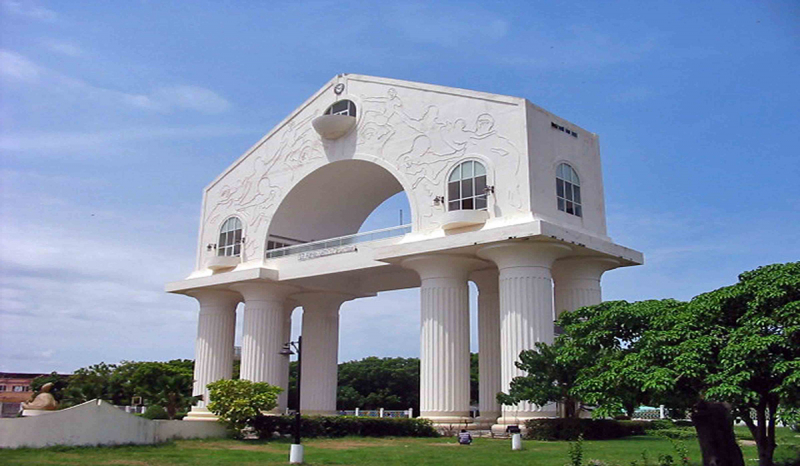
Photo: Newday -
On the north bank of the Gambia River, stone circles can be found in unusually vast numbers. The Wassu Stone Circles, out of all the Senegambia Stone Circles, are regarded as one of the most important and the most famous historical sites in Gambia. The Senegambian stone circles are a collection of megalithic stone circles found north of Janjanbureh in The Gambia and central Senegal. The stones, which are widely assumed to be ancient burial places, are massive, with the biggest exceeding 2.5 m / 8 ft in height. In Wassu's tourist center, visitors may learn more about the stone circles.
The Senegambia Stone Circles comprises four enormous stone circles that constitute an unusual concentration of over 1,000 monuments in a belt 100 kilometers wide that runs along the Gambia River for 350 kilometers. Sine Ngayène, Wanar, Wassu, and Kerbatch are four groups that encompass 93 stone circles and several tumuli, or burial mounds, some of which have been excavated to disclose material dating from the 3rd century BC to the 16th century AD. The laterite pillar stone rings and its attendant burial mounds form a large religious environment that dates back over 1,500 years. It is representative of a successful, well-organized, and long-lasting civilization.Open hours: daily
Address: near Kuntaur, The Gambia, GM, Africa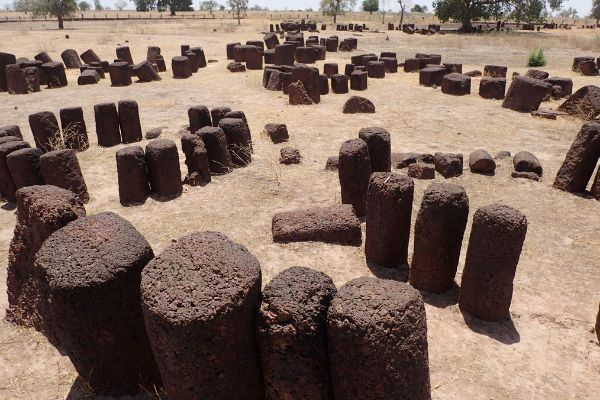
Video: UNESCO -
Fort Bullen is located on the beach, at the estuary of the River Gambia and the Atlantic Ocean, in the Lower Niumi District of the North Bank Region, on the northwest outskirts of Barra town, known as Barra Point. The British constructed it in 1826 in order to hinder the activities of certain European slave merchants. It was designated as a National Monument in the early 1970s, and it was classified as a UNESCO World Heritage Site in 2003, together with Banjul's Six-Gun Battery.
Fort Bullen was built at Barra Point in the early 1800s with one goal in mind: to drive off French slavers as they made their way up the River Gambia, thus enforcing the British ban on slavery. After a period of neglect, the fort was reactivated during World War II as an observatory and a station for British artillery. A WWII anti-aircraft gun position may still be seen in one of the bastions, as well as an improvised lighthouse atop another, and several rusted guns littering the beach, with a couple pointing across the river, empty. Fort Bullen is still one of The Gambia's best-preserved historic sites today.Open hours: daily - 09:00 to 17:00
Address: Banjul, The Gambia, GM, Africa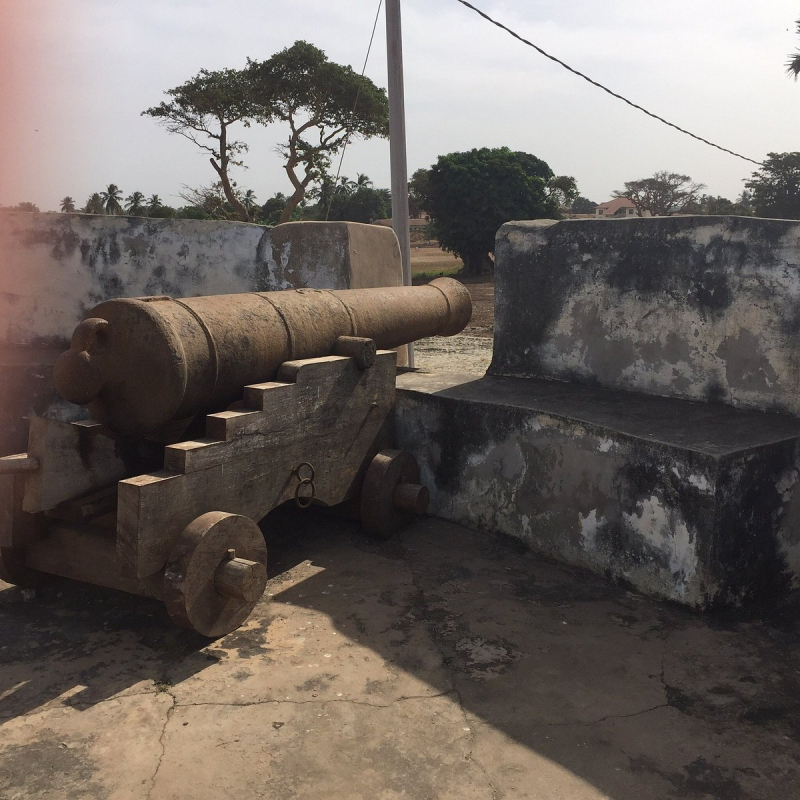
Photo: www.tripadvisor.com 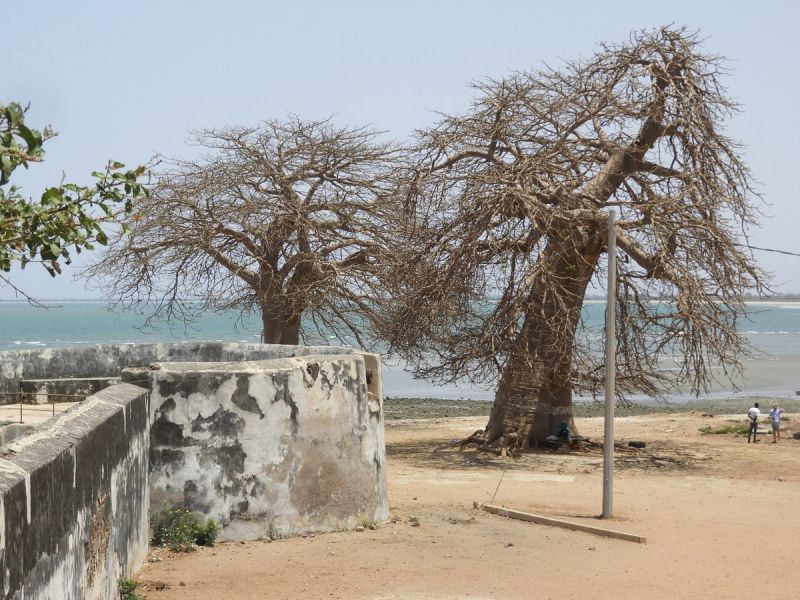
Photo: www.tripadvisor.com -
Kunta Kinteh Island, formerly known as James Island and St Andrew's Island, is a Gambia River island. Kunta Kinteh Island is a tiny island off the coast of Gambia, where the Gambia River meets the Atlantic Ocean. Because of its placement in the center of the river, it was an ideal location for controlling the canal. It was one of the first cultural interaction zones between Africa and Europe, since it was visited by explorers and traders looking for a maritime passage to India. By 1456, Portugal had purchased the island from local lords, and building of a fort had begun.
The island is home to Fort James and is one of the most famous historical sites in Gambia. Albreda, on the river's northern bank, is less than 3.2 kilometers (2 miles) away. It is a UNESCO World Heritage Site, along with adjacent sites such as a ruined Portuguese chapel and a colonial storehouse in Albreda, the Maurel Frères Building in Juffureh, and Fort Bullen and Six-Gun Battery near the entrance of the Gambia River.
Fort James is now in ruins. However, you may still get a feel of the place's history and envision what it must have been like in the past. Fort James, which was built in the mid-seventeenth century, kept numerous slaves while they awaited ships to carry them to the Americas. As a result, the fort is still a significant historical site and landmark. The fort has been possessed by the British, the French, and the Dutch at various points during its violent history.Open hours: daily
Address: James Island, The Gambia, GM, Africa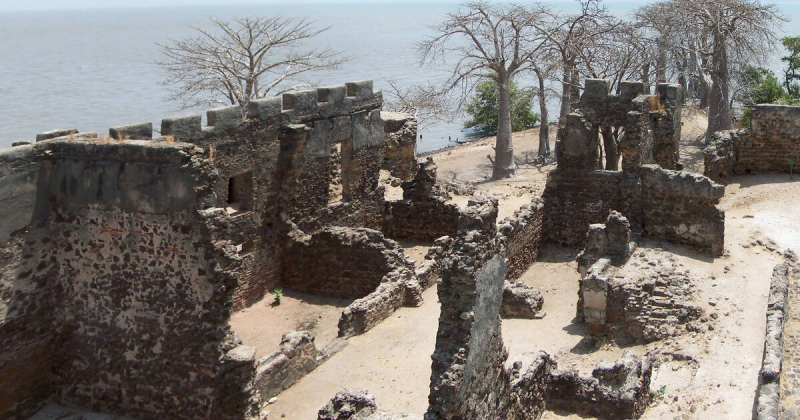
Photo: whc.unesco.org Video: Bomani Tyehimba






